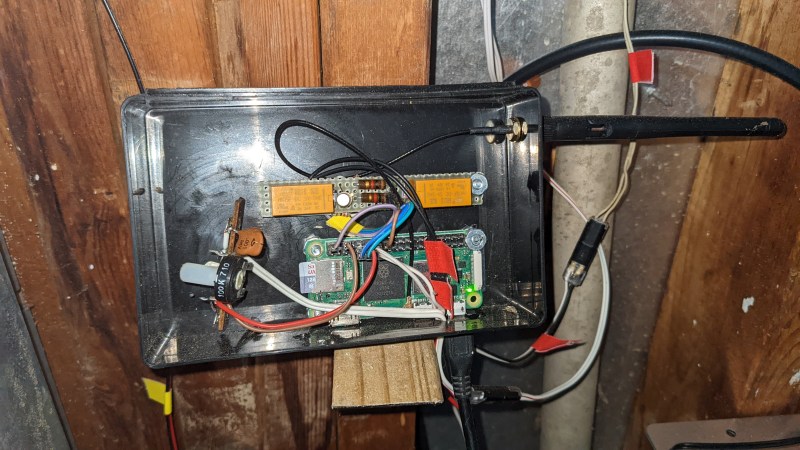After getting a new car, [Solo Pilot] missed the automatic garage door opening and closing system their old car had. So they set about building their own, called GarageMinder. On the project page you will find a bill of materials, schematics, and some notes about the approach taken in various versions of the software. [Solo Pilot] also made the software available.
The basic hardware centers around a Raspberry Pi Zero W, but there are plans to switch to an ESP32. From the car side of things there are built-in continuous Bluetooth Low Energy (BLE) advertisement broadcasts, which the Raspberry Pi can detect. Building a reliable system on top of these unreliable signals is difficult and you can read about some of the challenges and approaches that were taken during development. This is a work in progress and additional techniques and approaches are going to be trialed in future.
If you’re interested in Bluetooth garage door openers be sure to read about using a Bluetooth headset as a garage door opener for your Android device.
















A very old resistor and capacitors 1970?¿
Might find ancient components in my own stock as well… unless they’re electrolytics or some other thing that degrades noticably, I see no issue using what’s there.
Uh…..what capacitors are you talking about? The only one I see in the photo is a brown ceramic disc capacitor (on left, just above the black 100k potentiometer). I do not see any electrolytic capacitors, which are the kind you’re talking about (and yes, they do have a limited lifespan).
Yes, electrolytic capacitors leak after decades (or sooner if they have issues) but those are ceramics. Which.. don’t.
Could have been done with a 555.
I guess pressing a button is too difficult…
do you know how many buttons current cars have?????? i would get crazy in such a thing.
So the security of this solution depends on the reception of BLE beacon broadcasts? How difficult can it be to sniff some BLE packets from that Tesla and replay them when the owner is not at home? Will the system be able to tell the difference? At least the creator of this project doesn’t claim that this setup is secure.
I use homeassistant, my phone, ir sensor, and some Shellys. For coming home, if my phone is within range of house (within eye sight), and it is connected to my car bluetooth, then it opens the door. There is an IR sensor that detects if the car is there. If the car leaves and the door is open then it closes it after a few seconds. The door opener also beeps for 10 seconds letting anyone near know it is closing. If you want to be working in the garage with the door open, then I have a little cap to put on the sensor so it doesn’t close on you. Works like magic!
Newer garage door openers (such as Chamberlain/Liftmaster myQ) rely on their coporate cloud for authentication. This does give some drama when their server or app is not working.
I’ll take a couple relays and resistors over that anyday. Older openers, it’s a two-wire bus with wall control and obstacle sensors mux’ed on the same bus. Some use different resistor values for light on/off, door open/close and I have seen some use a capacitor – the bus has a safety aspect so it’s not simple DC levels there, it’s pulses.
I use an ESP8266 and it works fine, as long as it can connect to your WiFi router (LAN). No need for Big Brother to know when I got home. I use DNP3 protocol aspect from substations where a digital output (breaker) gets switched with two commands (select, then operate) which gives some extra coverage for errors.
Isn’t there a patent on a two way garage door status?
You can’t really patent using two-wires. I think the old patent is for having three devices (obstacle sensor and emitter, and wall switch) on the same bus- data and power, but with safety features so a dead obstacle sensor is detected.
Of course new Chamberlain uses proprietary serial protocol. They had many product recalls with their “Smart” wall control panels. Super-cap failed, F/W bug where it could squish somebody, LCD died etc. Not high quality product designs unfortunately. Ref. LiftMaster 889LMMC, 888 recalls etc.